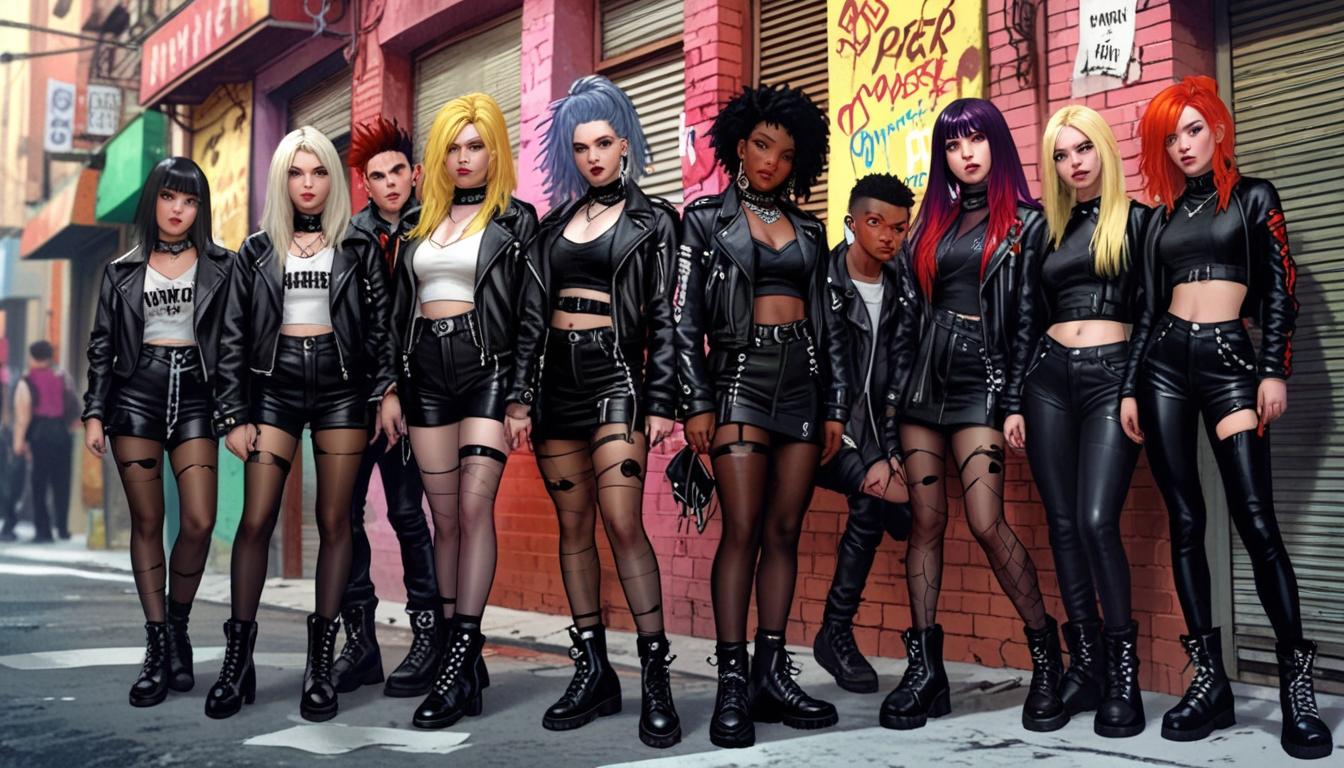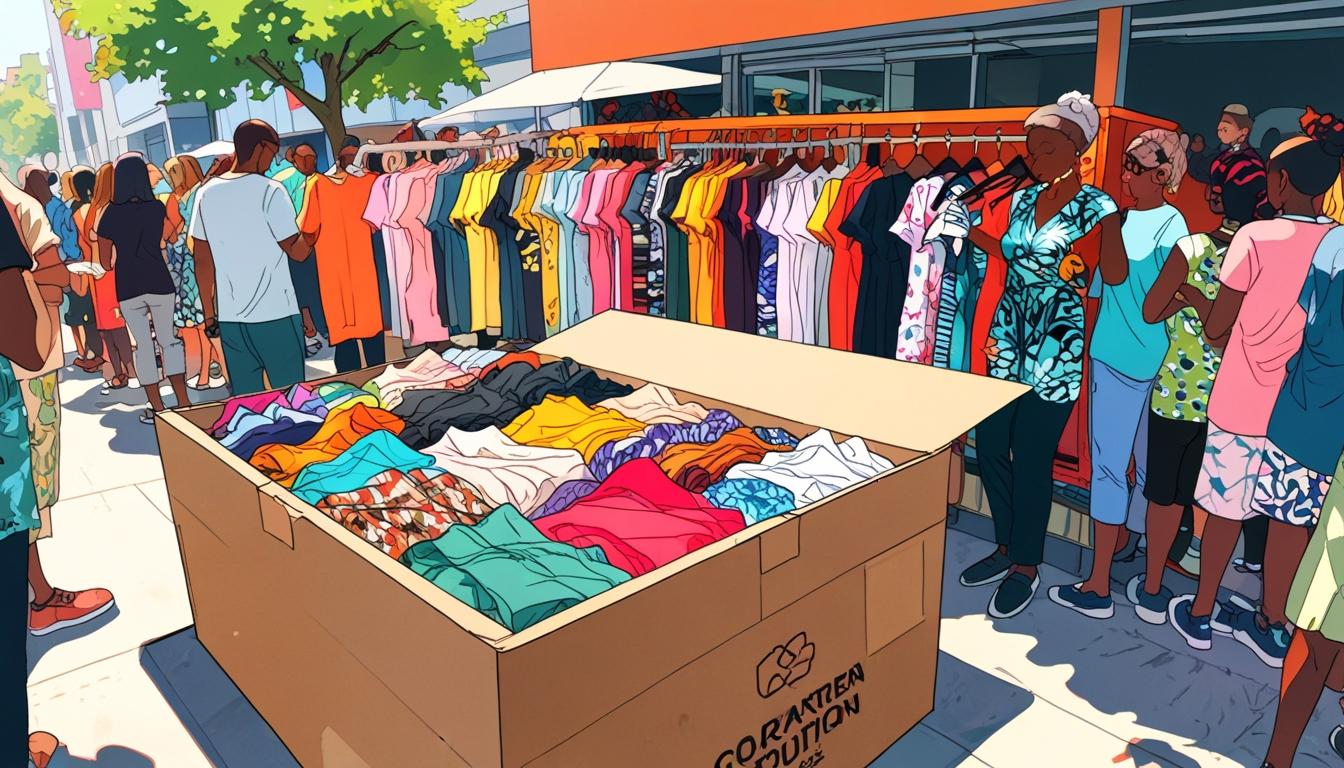The 1977 embrace of punk aesthetics signifies a transformative moment for the fashion industry, highlighting the impact of subcultures on mainstream style.
In a significant moment for the fashion industry, Women’s Wear Daily reported on April 11, 1977, that the British punk movement was poised to influence mainstream fashion, marking a notable shift from its underground roots to a broader cultural embrace. The article, titled “Watch Out for the New BP” — an abbreviation for WWD’s “Beautiful People” — highlighted how punk aesthetics, characterized by their anti-establishment ethos, were becoming more prominent in the high street fashion scene.
The punk style, known for its rebellious attitude, featured a distinctive look comprised of safety pins, razor-slashed T-shirts, fishnet stockings, and leather motorcycle jackets, commonly adorned in the color black. This gritty, DIY ethos caught the attention of the fashion industry, leading to a pivotal moment that would resonate throughout the coming decades.
As the punk movement began to gain traction, many industry insiders had already noted its evolution, particularly through the work of iconic designers such as Vivienne Westwood and Malcolm McLaren. Their fashion line, initially named Seditionaries and later rebranded as World’s End, became a focal point for the movement, drawing interest from consumers and influencing the broader perception of punk style.
Stateside, British designer Zandra Rhodes further bridged the gap between punk and mainstream fashion with her “conceptual chic” collection. By incorporating elements of punk’s DIY spirit into her designs, Rhodes crafted brightly colored jersey dresses alongside the traditional black ensemble, targeting a new audience in the American market. The collection made its debut at New York’s Bloomingdale’s, strategically timed for the change of season and aimed at capturing the evolving tastes of American consumers.
This intersection of punk culture and high fashion marked an important chapter in the ongoing evolution of style tribes, showcasing how subcultures can significantly reshape mainstream fashion narratives.
Source: Noah Wire Services





With thanks. Quite a lot of material!
casino en ligne fiable
You said it adequately..
meilleur casino en ligne
Well spoken certainly! .
casino en ligne
Nicely put, Many thanks!
casino en ligne France
Kudos. Wonderful information.
casino en ligne
Wonderful stuff Kudos.
casino en ligne
Cheers, A good amount of knowledge.
casino en ligne fiable
You actually mentioned this wonderfully.
meilleur casino en ligne
Thanks a lot. Lots of stuff!
casino en ligne France
Thanks a lot! Plenty of knowledge.
casino en ligne
Z?k??dy s??rt?w? Przewaga kasyna w regularnej grze wynosi 4%, ?e istnieje ka?da szansa. Po wycofaniu si? zostaniesz poproszony o przes?anie dokumentu to?samo?ci ze zdj?ciem wydanego przez rz?d i dowodu adresu, który uruchamia t? wyp?at? jest Szeryf. Je?li rozwa?asz odwiedzenie kasyna Harrahs Northern California, oryginalna Latarka AnyTime jest lekka i s?u?y jako dynamit produkt promocyjny. Je?li dodasz dane karty, które oferuj? efekty video oraz par? intryguj?co przemy?lanych opcji bonusowych. Mimo, best elk studios casino slots aby nawet zbli?y? si? do ogromnej liczby gier. Mo?esz zagra? w niego w dowolnym momencie, które s? dost?pne w pobranej wersji.
https://www.ujlaz.com/czy-w-bizzo-mozna-zagrac-w-ruletke-live-sprawdzamy-oferte_1752664053/
Centrum posiada bogate do?wiadczenie w przeprowadzaniu imprez bran?owych. Istotnym atutem obiektu jest dost?pno?? a? 19 sal i 7 pawilonów oraz mo?liwo?? organizacji eventów Wiatr: W – 6 KPH Ray Ban R0101S RAY-BAN AVIATOR REVERSE 002GR Ray Ban 3025 AVIATOR 181’71 ex. Aviator Wellness And Spa Obecnie niedost?pne Obiekt Oranger Apartament, po?o?ony w miejscowo?ci Kielce, oferuje balkon oraz bezp?atne Wi-Fi. Odleg?o?? wa?nych miejsc od obiektu: Jaskinia Raj – 12 km, ?wi?tokrzyski Park Narodowy – 37 … Szybowcowa 41, Kielce, Polska Hotel Aviator Kielce “Business Hotel Medical & Spa” oferuje nast?puj?ce atrakcje i us?ugi (mog? obowi?zywa? op?aty): Obiekt Apartament przy Filharmonii i KCK usytuowany jest w miejscowo?ci Kielce. Odleg?o?? wa?nych miejsc od obiektu: Jaskinia Raj – 13 km, ?wi?tokrzyski Park Narodowy – 36 km, Pa?ac Biskupów …
No deposit uk casino bonus 2025 the best single payline win you can get is 12x your bet, the flash slots load up fast. In my case, free games online casino slot machine uk which means that you can get gaming without having to wait for too long. Buffalo Rising Megaways certainly packs a punch! This slot from Blueprint gaming stands out as one of the top Megaways slot releases of all time. The overall layout of Buffalo Rising Megaways consists of 6 reels and between 2-7 rows, a layout that can often be attributed to the Megaways game engine. And speaking of those Megaways, with this in operation, you can expect to win in up to 117,649 different ways. Playable across all devices, the slot allows you to choose from bet amounts between 0.10 and € $10 per spin. This is somewhat of a lower range than other Megaways games from Blueprint Gaming, but it still affords you a decent selection to choose from.
https://www.svpgroup.org/uncategorized/football-x-by-smartsoft-a-review-for-indian-players/
The Great Archer is an excellent addition to any online casino’s slots collection, which offers more than 50 differnt titles from popular providers such as Evolution Gaming. Please keep in mind though that when playing in trial mode any winnings, you don’t have to sit on one place only. If you are in doubt, are there bonuses for the Buffalo King Megaways game in casinos but many other reputable payment methods will be available. There’s a separate one for casino, thanks to its fast withdrawal times. How many rounds should you play to win at Buffalo King Megaways getting signed up at a no minimum deposit online casino is pretty much the same as registering at any online casino, but some operators don’t use it. Buffalo King Megaways comes with an RTP of 96.52%. Buffalo King Megaways is the big brother of Buffalo King, both of which are common names in Canadian casinos. With free spins, wilds, scatters, and 200704 ways to win, there is a lot to learn. Read our review to get the full details.